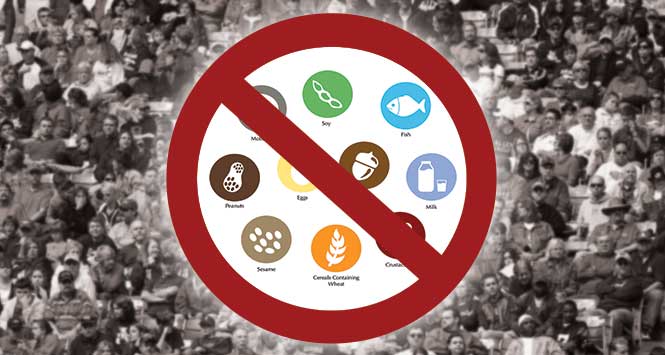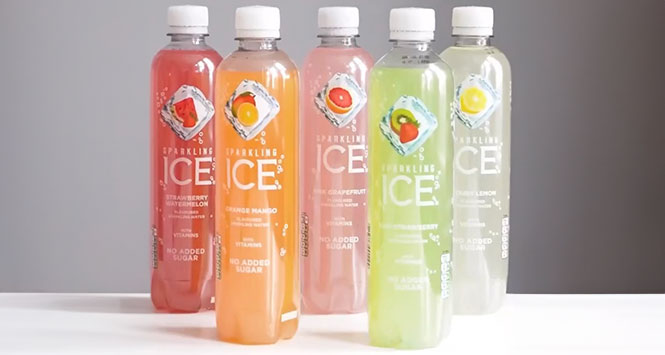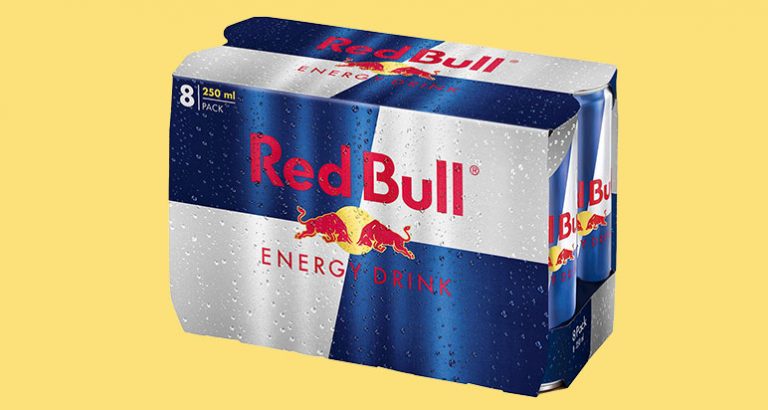With low- and no-sugar the current megatrend in retailing and over a third of UK shoppers buying into the traditional free-from category, is it time for local retailers to re-appraise the opportunity?
by Antony Begley
The last decade has been a transformative one for local retailing in Scotland with a flood of legislation and changing shopper habits forcing retailers to evolve, and quickly. This has led to sustained pressure on virtually all the product categories that historically constituted the bulk of a typical convenience store’s turnover.
Tobacco and alcohol have been ravaged by new laws and rules designed to curb or eliminate consumption while high sugar and high fat products like confectionery and soft drinks are in the firing line now. In short, retailers can no longer rely on being able to make a living from a c-store of 10 years ago.
There are moral issues here too, particularly around the role of the retailer in helping the government achieve its aim of improving the diet of the Scottish people. Few retailers disagree with the principle, but many take issue with the way they are forced into the front line of policing and managing the process of national self-improvement – particularly when at the heart of that debate lies a commercial conundrum: to improve the nation’s diet, retailers are required to suppress sales of the products that keep a roof over the heads of their family.
Unfortunately the government is less forthcoming when it comes to helping retailers find new, sustainable sources of income, rather than simply choking off sales in key categories and leaving retailers to try to pick up the pieces of a broken business. Former Scottish Justice Secretary Kenny MacAskill’s description of the decimation of the convenience sector as “acceptable collateral damage” in pursuit of a healthier Scotland still smarts all these years later.
That sort of arrogance and ignorance still however seems to be the modus operandi of the current government, although many bodies – most notably the SGF – are working hard to get politicians onside and understanding the subtler nuances of what is a gargantuan Scottish local retailing industry.
Scottish local retailers are nothing if not resilient however, and have been remarkably successful against the odds in creating new markets, most notably fresh and chilled and food-to-go in recent years. But as any retailer will tell you, building a decent fresh and chilled range or a solid food-to-go offering is an expensive, complicated and difficult business.
So retailers are having to work harder and harder, often just to stand still, and every new opportunity – no matter how marginal or risky, must be pursued. Which brings us to ‘free-from’.
A key question is how to effectively merchandise a ‘free-from’ range in-store. There are two main options:
- Site your free-from range throughout the store with free-from products sitting alongside equivalent standard versions within each category. This makes it easy for shoppers to find the products as they sit naturally within the appropriate category.
- A second option is to create a dedicated bay or section in-store that is dedicated entirely to free-from lines. This makes it easier for free-from shoppers to browse your entire range and may help drive up basket-spend.
Not so long ago, free-from was a niche market aimed at a small section of the community and serviced by very few manufacturers, often with lines priced in the super-premium bracket. But then something strange happened. While once it was the likes of Holland & Barrett serving that market, slowly the supermarkets glimpsed an opportunity. In no time, every major multiple had introduced a free-from bay and these seem to be getting bigger and bigger all the time, as a walk round your local Sainsbury’s will testify.
Unlikely as it seemed, this market appeared to be bigger than many retailers would have anticipated. The supermarkets don’t have four and five metre bays of this stuff if it doesn’t sell.
But just how big is the market, and should local retailers with much less space and no ability to stock very-slow selling lines be interested?
Let’s look at some numbers: The latest statistics published by independent charity Coeliac UK show that sales of gluten-free products rose by a massive 27% in 2016. Another recent Kantar study found that a very significant 13% of Britons are now opting to go gluten-free while Mintel data suggests a third of British consumers consciously buy free-from foods in any six-month period.
The same Mintel data estimates that the UK free-from market is currently worth £470m and is predicted to grow by 43% between now and 2020. Still not convinced? Another recent study of over 2,000 shoppers by discount agency VoucherCodesPro found that shoppers who choose specific dietary requirements typically spend £2,000 a year more on groceries than those who don’t. Vegan, vegetarian, gluten-free and halal diets shoppers spend, on average, an estimated £162 per month extra.
“To some, free-from may still have the air of an ‘alternative’ or niche category but it’s now nearly 40% bigger than a signature staple of British consumption, tea,” says Mike Watkins, Head of Retailer and Business Insight at consumer researcher giant Nielsen. “The nation is increasingly concerned about diet and health. Over four in 10 Britons now actively avoid certain ingredients in what they eat and drink, which is reflected in fresh fruit and free-from being the fastest-growing categories.”
The free-from market has been experiencing huge growth, powered along in recent times by the increasing shopper interest in ‘healthier’ options and by a marked growth in specialist diets. Some of this demand is created by those with a medical requirement to avoid gluten but there is increasing data to show that many shoppers are buying free-from as a simple lifestyle choice.
One in three households, for instance, now buys into the plant-based food and drink categories every week. The plant-based category increased in value by +13% last year. Now worth over £200m in the UK, it brought in over one million new shoppers in 2016.
Brand leader Alpro has seen growth in value at 24% and is now the UK’s fastest-growing FMCG brand in grocery. Alpro-branded household penetration has climbed to nearly 35%.
But don’t lose sight of the fact that, from a retailer’s point of view, free-from means different things to different shoppers. For some, it’s the traditional specialist lines that exclude one or more ingredient to which at least some shoppers can have either an allergic reaction or an intolerance. Typically, this might refer to gluten present in wheat or to dairy products in general.
But for others it can be as simple as low- or no-sugar – and a quick look at 90% of products launched in the last year by any major soft drinks manufacturer tells you all you need to know about how fast that trend is set to develop, propelled no doubt by the infamous sugar tax.
Indeed, reformulation is one of the megatrend buzzwords of our era. Biscuit, confectionery and soft drinks manufacturers are falling over themselves to remove fat, sugar and other perceived nasties from them products – which is, incidentally, to be commended.
And for others still, fresh produce – particularly fruit and vegetables – is viewed as free-from. Unprocessed, natural and healthy. The trend also encompasses organic produce, free of artificial fertilisers and preservatives.
According to Nielsen data, the key growth areas of organic foods and drinks in the 52 weeks to 1 July 2017 include:
- Spreads and preserves, including nut butters: +21%
- Fruit +12.6%: with tomatoes up by 13.1% and bananas marking the highest growth of any food and drink product in the organic sector with sales soaring by over 25.5%
- Confectionery and soft drinks: +8.3%
- Salad: +7.9%
- Cereals: +6.5%
- Dairy, the largest market sector for organic: +1.25% overall, with butter growing by 9.2% and milk by 2.9%
Free-from, it seems, is more of an approach to life than a set of product categories.
So while the debate about the role of the retailer in improving the nation’s diet rolls on, as it should, the reality is that retailers should be preparing for a new world order in local retailing if they wish to build a business that’s sustainable for the next 10 or 20 years.
This wide free-from trend has big implications for independent retailers in terms of the range they stock and the way they merchandise dairy-free, gluten-free and other specialist diet lines in-store, as well as the reformulated variants of traditional big selling products like Irn-Bru Xtra and Coca-Cola Zero.
Building a strong, profitable free-from range has never been easier but doing so within a commercial framework is key to success – and pricing is vital. Data from Kantar shows that it’s a myth that free-from shoppers are less price conscious than average consumers.
Over half of free-from consumers complain that price differentials between free-from and non-specific equivalents are too wide. The implication for local retailers here is clear: free-from shoppers are just as keen on value as everyone else, so make sure you are delivering against that demand.
And while more and more shoppers are seeking out free-from products, there is growing evidence that they are not prepared to compromise on taste.
Sam Benjamin, Brand Manager at Too Good To Be Gluten Free, says: “The growing gluten-free market is demanding free-from choices but with a heavy focus on the taste and quality of the product. Supermarkets have responded to consumers by expanding their gluten-free ranges to the point that we now see around 80% of all gluten-free products in the market stocked by major supermarket brands.”
Mark Sterratt, Market, Strategy & Planning Director at Lucozade Ribena Suntory agrees, but says retailers must step it up to meet the demands of today’s shoppers: “Low sugar soft drinks are crucially important to independent retailers. When looking at total soft drinks, the segment is currently worth £460m in independent convenience and at its current rate of growth is expected to top £575m by 2019 [IRI, May 2017]. In fact, the growth of low calorie soft drinks is outpacing the growth of the wider soft drinks category and, with water excluded, now claims a 30% share of total soft drinks across the market.
“Yet within independent convenience, just 21% of total soft drink sales are low sugar – highlighting the opportunity for independent retailers to grow their profits in this area by becoming a destination of choice and drive repeat footfall. Furthermore, research shows that shoppers who are interested in healthier options in store also typically spend more [HIM CTP, 2017] – so these consumers should be a key target.”
Whichever way you look at the free-from opportunity, there’s little doubt that it is one that has an important future and it’s one that local retailers can’t afford to ignore.





